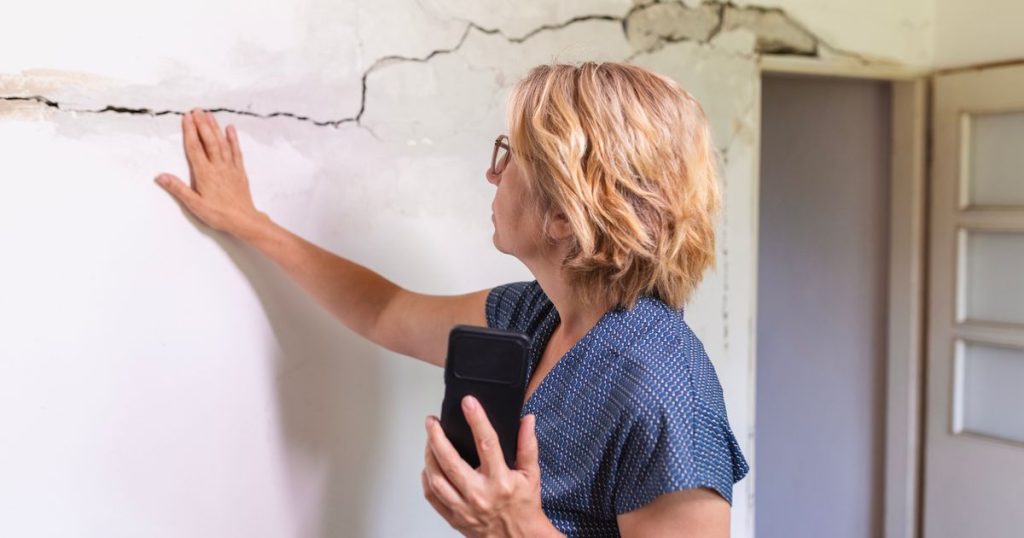Homes, like people, age over time, and this aging process often manifests in the form of cracks appearing on walls. While some cracks are harmless and simply a result of natural settling or environmental changes, others can be warning signs of deeper structural issues that may even threaten the integrity of your home. Understanding the difference between benign cracks and those that require immediate attention is crucial for every homeowner. HuffPost consulted home experts, including licensed home inspectors, to provide insights into which wall cracks you can ignore and which ones demand urgent action.
Hairline cracks in drywall, especially those that appear after sudden temperature changes, are generally not a cause for concern. According to Katie Whitaker, a licensed home inspector and owner of Handyma’am Home Inspections, these cracks are usually no wider than a credit card and follow clean lines that may appear along drywall seams. Such cracks are often the result of a less-than-perfect “tape and mud job” during the drywall installation process. If the crack seems clean or follows a straight line, it’s likely just a minor issue related to the construction process. Environmental factors, such as drastic temperature fluctuations—like those experienced in a New York City apartment with sudden heating changes—can also cause these harmless cracks to appear. To determine if a wall is made of drywall, Whitaker suggests knocking on it with your fist. If it produces a hollow sound, it’s drywall; plaster walls, on the other hand, will sound more solid.
However, not all cracks are as innocuous as hairline cracks in drywall. Certain types of cracks, such as horizontal or diagonal cracks, especially those that change direction, should prompt closer scrutiny. Whitaker emphasizes that while a single horizontal crack doesn’t necessarily mean your home is on the verge of collapse, it could signal that something is not properly supported or that pressure is unevenly distributed. If such cracks appear in drywall, they may indicate a structural problem, as they don’t align with how drywall seams are typically placed. Homeowners should be particularly vigilant if the crack is growing larger or if it’s accompanied by other red flags, such as sloping floors or doors and windows that no longer open and close smoothly. If you notice a crack and then observe it expanding rapidly, followed by other issues like uneven flooring, it’s a clear sign that the problem is worsening, and professional assessment is needed.
When evaluating a concerning wall crack, it’s often best to start with a trusted home repair person or general contractor. A reliable handyperson can assess the crack and determine whether it’s a simple fix or a more serious issue that requires further investigation. Homeowners should be prepared to share the history of the crack, including when it first appeared, whether it has grown over time, and if similar cracks have developed in other areas of the home. This information, along with details about recent leaks or other potential causes, can help the repair person or contractor provide a more accurate diagnosis. Whitaker explains that a handyperson can either reassure you that the crack is minor and easy to repair or alert you to more serious underlying issues. From there, they can guide you on the next steps to take, whether it’s a simple repair or a more comprehensive evaluation.
Foundation cracks are another area of concern that should never be ignored. Whether your home has a concrete-slab foundation or a crawl-space foundation, cracks in the foundation walls can signal structural problems. Melissa Coon, a home inspector based in Oklahoma City, explains that foundation walls are dug deep into the earth, below the frost line, and rely on the surrounding soil for support. If you notice cracks in the visible parts of your foundation wall, particularly in areas like the basement, certain types of cracks could indicate serious issues. Horizontal cracks, V-shaped cracks (which are wider on one side), or cracks that are actively expanding are all signs that warrant immediate attention. Horizontal cracks, in particular, are often a clear indicator of significant structural damage, as they can signal that the foundation is under uneven pressure or shifting.
In such cases, Coon and Whitaker agree that it’s essential to call a structural engineer for an emergency assessment. A structural engineer is trained to evaluate the integrity of a home and determine whether it’s safe or if repairs are necessary to prevent collapse. While cracks alone don’t tell the full story of what’s happening within a home’s structure, they are valuable clues that should be considered in the context of other potential warning signs. Coon stresses the importance of adopting a holistic approach to cracks by paying attention to other factors, such as drainage around the home, which can exacerbate structural issues. For instance, poor drainage can cause soil to shift or erode, putting additional pressure on the foundation. Homeowners should also monitor recurring cracks; if a crack is repaired only to reappear, it’s a sign of ongoing movement in the structure, which needs to be addressed.
Ultimately, cracks in your walls or foundation are not something to be taken lightly. While some are harmless and require nothing more than a quick repair, others can signal serious structural problems that demand urgent attention. By understanding the types of cracks, monitoring their progression, and seeking professional advice when necessary, homeowners can ensure their homes remain safe and secure for years to come. Whether it’s a simple hairline crack in the drywall or a more concerning horizontal crack in the foundation, staying informed and proactive is key to maintaining the integrity of your home.
